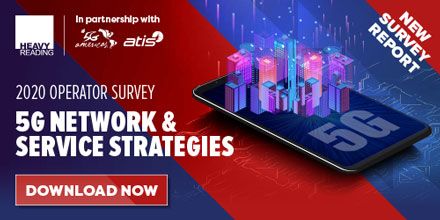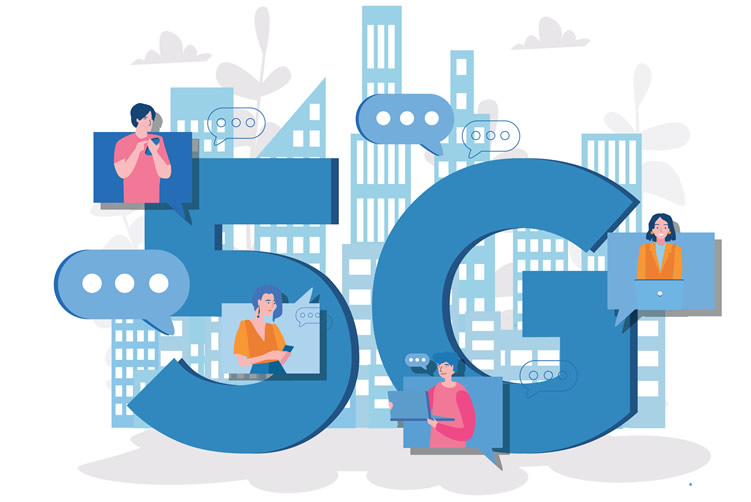Highlights of Heavy Reading’s 5G Network Operator Survey
5G Deployment Timelines & Services (from Heavy Reading’s 5G report), Author: Gabriel Brown, Principal Analyst, Mobile Networks & 5G, Heavy Reading
Key Findings:
• On a 2-year view, 41% of respondents said “faster end user speeds” is the primary driver for 5G, up from 33% in Heavy Reading’s 2019 survey. Over a 5-year view, the ability to “address new markets & services” climbs to first place in the ranking, with 42%. Operators appear to see 5G technology investment as focused on evolving their current service strategies in the near term and becoming more ambitious in the medium term.
• Heavy Reading asked when operators think more than 25% of their subscriber base will have a 5G device. 50% of respondents expect this to be the case by the end of 2022, up slightly from 45% in our 2019 survey. This looks like a bullish view at first glance, but it is in line with Omdia’s independent estimate of 28% 5G penetration in the U.S. during the same timeframe.
• Over a 3-year view, operators expect some differences between their 4G and 5G service portfolios, but not major ones. 43% said their company will offer a “very similar services portfolio” while a comparable 45% believe their portfolio will offer “mostly common services, with some 5G-only services.” Only 8% expect to offer “many 5G-only services.”
As was the case in the 2019 survey, Heavy Reading asked respondents to identify the primary drivers for 5G deployment over 2- and 5-year time horizons.
On a 2-year view, the large st group (41%) said “faster end user speeds” is the primary driver for 5G, up from 33% in 2019. “Addressing new markets and services” comes second with 28%. “System capacity and efficiency” (16%) and “competitive reasons” (16%) bring up the rear, both with reduced support relative to our 2019 survey.
These results fit with how operators tended to market 5G in 2019 – namely, on downlink speed and gigabit performance claims.
Over a 5-year view, the ability to “address new markets and services” climbs to first place in the ranking at 42%, significantly above all other scores. Operators clearly see 5G investment as focused on how advanced technology capabilities can be translated into compelling services over
the medium term.
“ULTRA-RELIABLE LOW LATENCY COMMUNICATION (URLLC) SERVICES ARE ONE OF THE DEFINING FEATURES OF 5G. URLLC REQUIREMENTS WERE INFLUENTIAL IN THE DESIGN OF THE 5G SYSTEM AND AIR INTERFACE.”
Editor’s Note:
It remains to be seen if URLLC capabilities will be finalized in 3GPP Release 16 (June 2020) and included in the first ITU IMT-2020 standard.
…………………………………………………………………………………………………..

…………………………………………………………………………………………………………….
In terms of 5G devices, 50% of respondents expect 25% or more of their subscriber base to have a 5G-compatible handset by the end of 2022. At first glance, this looks like a bullish view, and it is up slightly from Heavy Reading’s 2019 survey. This positive view on 5G adoption perhaps reflects better knowledge of, and greater confidence in, 5G device and chipset development timelines. It also possibly echoes analyst upgrades to 5G device estimates made by research firms across the board in 2019 and widely reported in the media.
For example, the result is in line with Omdia’s independently produced estimate of 28% 5G penetration in the U.S. during the same timeframe. A critical factor is handset replacement cycles for smartphones, which have lengthened in most developed markets in the past few years. In some markets – like China and South Korea – there is evidence that 5G can drive an acceleration in handset upgrades. But this is not a universal phenomenon; for instance, there is not yet good evidence of this in Europe and the U.S.
This may be because first-generation 5G devices tend to come with compromises (e.g., on power consumption, cost, and bugs). Looking into 2020 and 2021, newer handset models at high- and mid-tier prices will become available in volume. For example, a 5G iPhone – rumored for late 2020 – will be important, particularly in the U.S., where iPhone market share is high. As established earlier, over a 5-year view, operators see 5G addressing new markets and driving advanced services (Fig 7). sought insight into the differences between 5G and 4G service portfolios over a 3-year view.
A fair summary would be that operators expect some differences, but not major ones. A large 43% said their company will offer a “very similar services portfolio” for 4G and 5G users, while a comparable 45% believe their portfolio will offer “mostly common services, with some 5G-only services.” Only 8% expect to offer “many 5G-only services.”
In part, this result may reflect that 5G deployed in non-standalone (NSA) mode makes existing 4G services faster rather than fundamentally different. As discussed later, it may be that a transition to standalone (SA) is a prerequisite for service innovation.



